TV Resolution
Everything You Need to Know
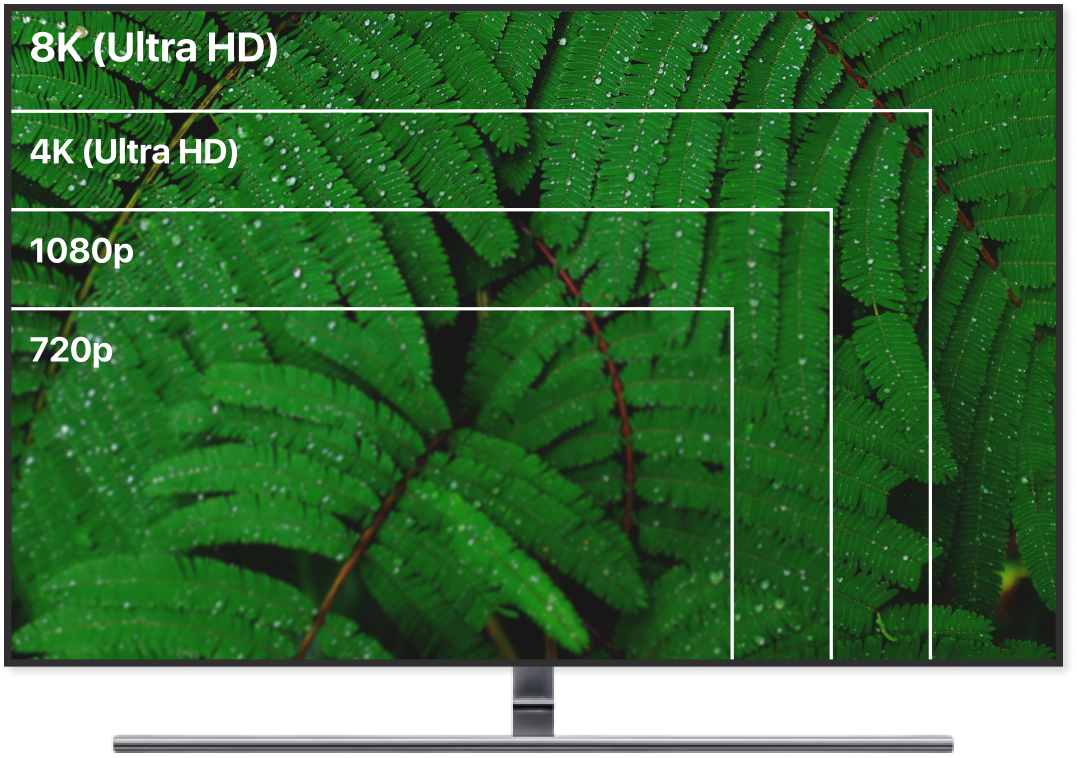
When choosing a new TV for your home theater, there is a lot to consider, including your new device’s display resolution.
However, you won’t often go to the consumer electronics store or search your favorite website with lines and pixels in mind! Instead, you’ll usually be thinking in terms of high definition (HD) or 4K ultra HD.

Yet, you might have no idea what these mean, or even if they matter. Frankly, some people might not even care; they simply want to buy the best TV!
In this guide, we’ll look at everything you need to know about TV resolution and how much focus you need to put on this factor when choosing a new TV.
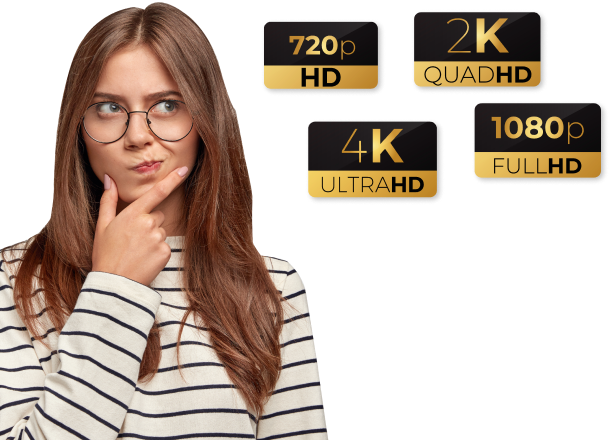
Yet, you might have no idea what these mean, or even if they matter. Frankly, some people might not even care; they simply want to buy the best TV!
In this guide, we’ll look at everything you need to know about TV resolution and how much focus you need to put on this factor when choosing a new TV.
What is native resolution?
All TV screens have what is known as a native resolution.
Native resolution is the size of the screen, expressed as the number of pixels in the display. In a television display, the number of pixels is vital in determining the picture’s quality and the level of depth and detail you can enjoy.
1920 X 1080
1920 px X 1080 px
This is because each pixel in a display is lit independently and differently, therefore taking a different color. The more pixels there are, the more depth a display can have and the greater variety of colors shown at a given time.
However, it is too simplistic to say that more pixels and a higher resolution equals a better display.
Of course, when you watch TV, you don’t notice individual pixels. If you want to see pixels in action, go right up close to your screen, and you might be able to make them out. However, you’ll be more interested in the large picture that all the pixels together create, which is what you see whenever you watch a movie on your TV.
This is actually an important point to consider in a broader context. The greater the distance you sit from your TV, the lower the level of detail you’ll be able to see.
What is the image resolution?
Many people don’t realize that image resolution is different from the native resolution.
While native resolution talks about the number of pixels a TV screen can display, image resolution refers to what is transmitted to the television.
So, for example, you can have a transmission with a high definition (HD) image resolution being sent to a TV screen with an 8K native resolution. We’ll learn more about why this is an important thing to know in a little while.
Native Resolution
8K Ultra HD
Image Resolution
High Definition (HD)
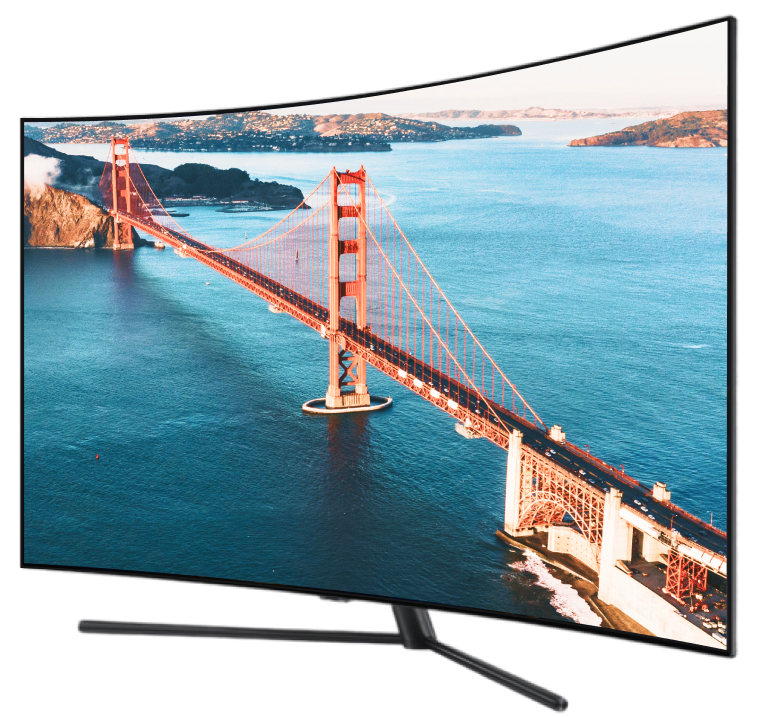
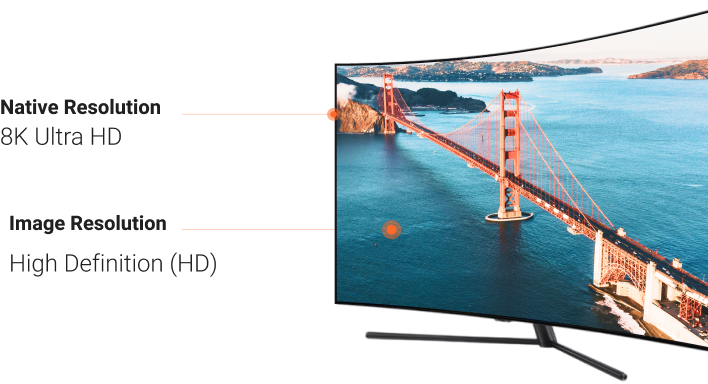
In terms of what definitions mean, they’re the same. HD is HD, and 4K is 4K, whether we’re talking about native or image resolutions. The main thing you need to know from a buyer’s perspective is that your TV’s native resolution is fixed. In contrast, the image resolution may change depending on the transmission source. Recording content, such as on a set-top box, or downloading it may also affect the image resolution.
It is common for most transmissions to be available in multiple resolutions. For example, if you have a cable subscription, you’ll often find two of the same channel available, one in HD and the other not. Some channels are even available in 4K. Likewise, streaming services like Netflix and Amazon Prime will offer content in HD and 4K. However, you can still watch them in standard definition because of the screen and display limitations or a slow internet connection, for example.

You can learn more about what the different definitions and terminology mean in our Home Theater Glossary.
What is standard definition (SD)?
The term “standard definition” is itself a relatively new one.
After all, through most of the 20th century, we knew “standard definition” as the only type of display that could be transmitted and that we could display on our TV screens. The term was coined following the widespread adoption of high definition (HD) in consumer TV during the first decade of this century.
The resolution of an SD picture depends on where you are.
NTSC system & SD is 480i
PAL system & SD is 576i
As such, SD is slightly better in PAL regions than in NTSC regions (Central America and some South American countries also use NTSC).
PAL regions
NTSC regions
In NTSC regions, a standard definition transmission delivers 307,200 pixels. Keep this number in mind as we explore higher quality image resolutions, as the difference is staggering!
What is high definition (HD)?
High definition is the most popular and widely transmitted non-SD resolution.
Many TV companies now film in HD as standard. Transmissions are also following this route, which is why your cable or satellite TV service has twice the number of channels to allow for the HD version! Given the volume of TV sets that are now sold with HD native resolutions as standard, many more people can receive and watch true HD. Furthermore, they can enjoy an incredible viewing experience as the native resolution of their TV matches the image resolution of the transmission, reducing the need for processing and upscaling.
In contrast, when HDMI standards were first developed, and HD became mainstream among consumers, HD transmissions were often limited to:

Blu-Ray players
Games consoles
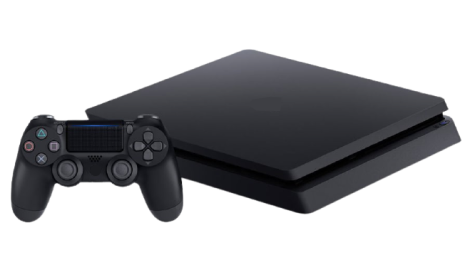
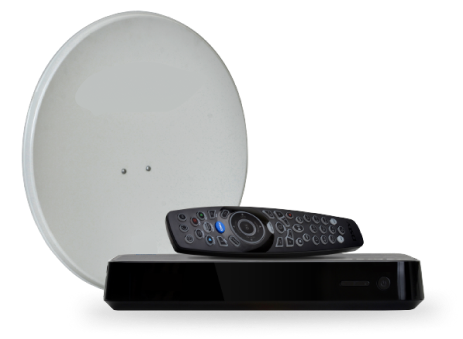
Limited volumes of content and transmissions from satellite and cable TV and early streaming services
HD itself is sometimes known as 1080p. This means an HD transmission has 1920 horizontal and 1080 vertical pixels. This gives an HD transmission a total of 2,073,600 pixels, a massive increase on SD. No wonder it’s impossible to watch HD on an SD TV!
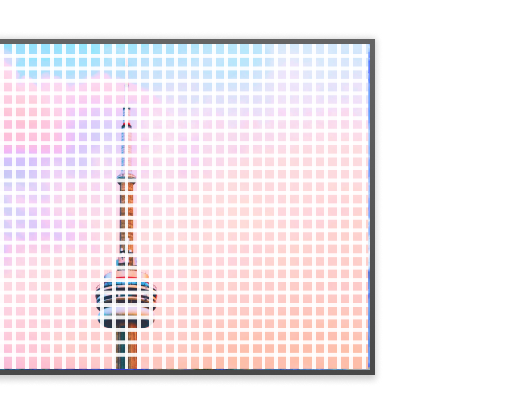
1920 horizontal pixels X 1080 vertical pixels
= 2,073,600 pixels
This also gives 2,073,600 pixels in total but uses interlacing rather than progressive scanning, so a lower quality picture than 1080i. Remember to check out our Home Theater Glossary to learn more about the differences between these!
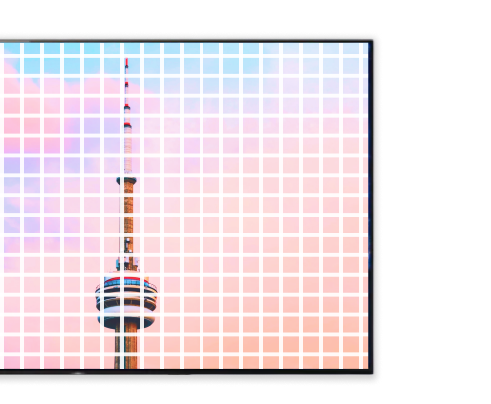
1280 horizontal pixels X 720 vertical pixels
= 921,600 pixels
This HD format uses 1280 horizontal and 720 vertical pixels, for a total of 921,600 pixels. Although still considered an HD picture, and the minimum resolution for something to be considered HD, it is closer to SD in terms of the number of pixels! Nonetheless, it remains a significant step up on SD. If you’re buying an HD TV for the first time and it has a native resolution of 720p, you’re sure to notice the difference!
A critical aspect of higher resolution transmissions is the bandwidth required to carry them. Although 1080i produces the same number of pixels as 1080p, this format requires far lower bandwidth.
As such, many HD transmissions are still 1080i and 720p. However, 1080p and higher resolutions are increasingly used as technology evolves, and demand for higher quality transmissions continues to grow.
What is 4K ultra HD?
4K is also commonly known as ultra HD, with an image resolution of 2160p.
4K images are recorded using progressive scan as standard. The minimum resolution for a picture to be 4K is 3840 horizontal and 2160 vertical pixels. This delivers a staggering 8,294,400 pixels, a four times better picture than HD, hence its name.
horizontal
vertical
pixels
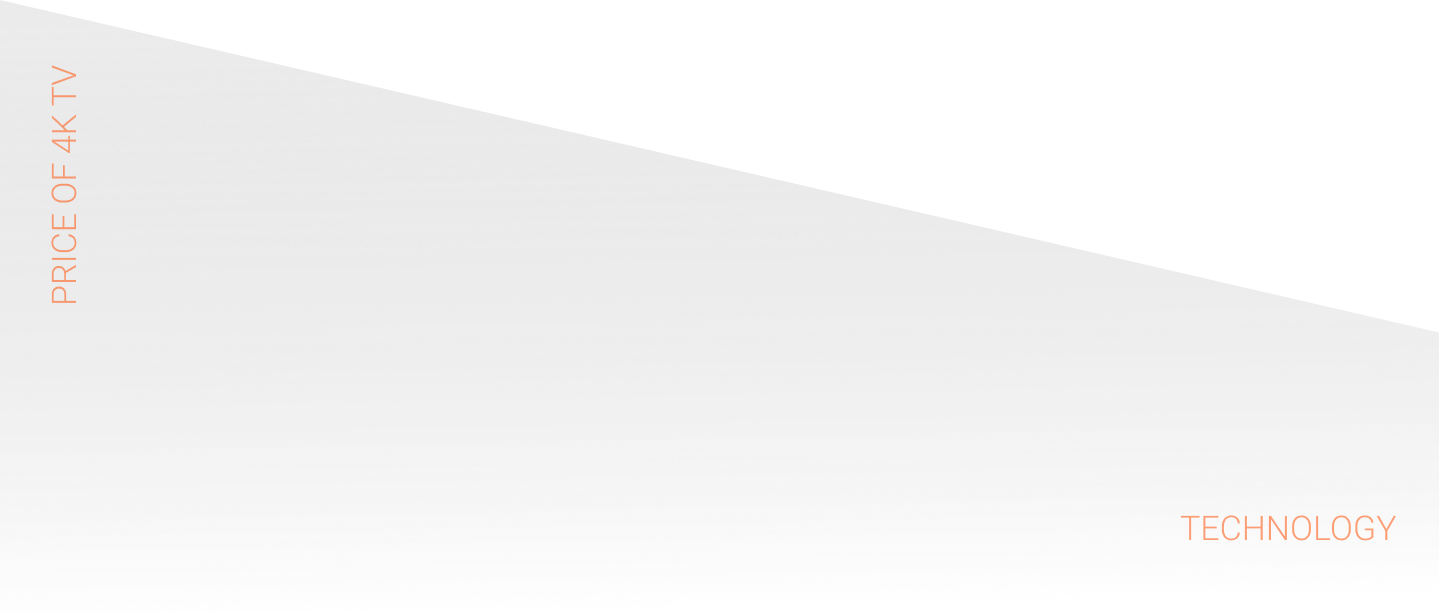
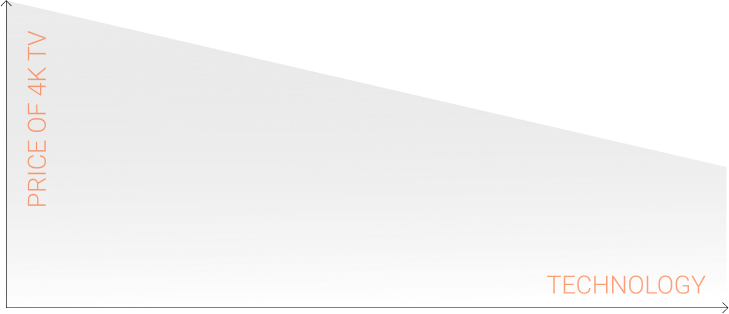
However, while technology is developing and 4K TV prices fall at pace,
4K transmissions are still in the minority. You can pay for a TV capable of
showing 4K pictures if you wish. However, the relatively low volume of
content means unless your TV has a fantastic processor – which will
increase its price considerably – you might not be able to watch much 4K
content.
If you’re considering buying a 4K TV, think about the types of content you like watching and discovering what is available in 4K. At the same time, if you’re happy to bide your time but want to invest in a new TV now, 4K will only become more popular in the coming years. Some TV channels already offer a 4K option, while streaming content from Netflix and Amazon Prime is likely to be increasingly available in 4K, too. You might even decide to upgrade to a 4K Blu-Ray player.
What is 8K?
8K image resolutions, also known as 8K ultra HD, have a resolution of 4320p.
8K images also use progressive scan as standard, with the minimum resolution of 8K being 7680 horizontal and 4320 vertical pixels. While this gives a total number of pixels of 33,177,600 – four times more than 4K – it’s pretty tricky to tell the difference between a 4K and an 8K image unless you’re really close to it.
horizontal
vertical
pixels
As of early 2021
There are very few sources producing and transmitting 8K content.
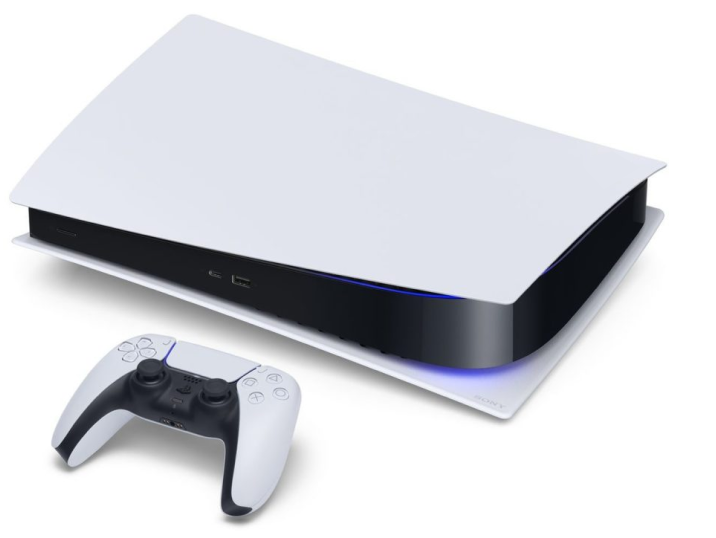

However, if you own one of the newest PlayStation or Xbox consoles, you will be able to enjoy some games in 8K! There aren’t even many 8K cameras in existence!
Interestingly, many in the film and TV industry are driving demand for 8K cameras, but because they will help them create better 4K recordings, rather than a desire to start producing 8K content at scale.
In terms of 8K and your TV, you probably don’t need to ditch your current TV to upgrade to 8K. You probably won’t notice much, if any, difference between 4K and 8K. You will end up spending more money on a product you won’t be able to use or appreciate fully!
How important is the resolution
of your TV?
It depends on the rest of your home theater setup!
In many cases, the resolution of your TV won’t actually be that important to your viewing experience on its own, but be part of a broader range of considerations you’ll need to make when choosing a TV.
Why do we say it won’t be that important?
Well, as we’ll look at later, you often won’t be able to tell the difference in resolutions unless you’re sitting so close to the screen that you’ll quickly damage your eyes!
What you need to remember about
TV resolutions
Let’s say you’re watching an 8K TV
There are very few, if any, sources worldwide currently transmitting TV pictures in 8K. Therefore, to watch in 8K, you need a TV that can process the images it receives to deliver such a viewing experience.
The same is true for watching any show or consuming any other type of content that provides a different image resolution from the native resolution of your TV set.
The best viewing experience with any TV will always come when the native resolution matches the image resolution.
Native Resolution
8k UHD TV
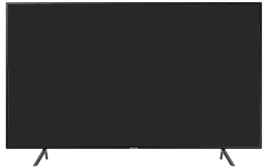
Image Resolution
1080p

Final Resolution
1080p
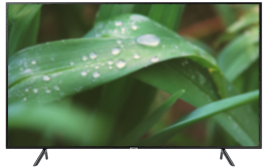
Native Resolution
4k UHD TV

Image Resolution
4k UHD TV

Final Resolution
4k UHD TV
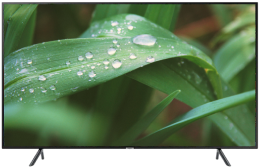
Thankfully, increasing numbers of transmissions are now HD as standard, with many sources, including Netflix, offering some 4K content. This reduces the level of processing needed and leads to you getting a better picture.
An 8K TV with low processing power won’t magically make everything you watch look incredible. It’ll definitely leave your wallet a little lighter, but that’s about it!
What other factors should you
consider when choosing a TV?
While you might focus on the TV resolution when choosing a new device, it probably isn’t what you should make your top priority.
Sure, choosing a 4K TV over a standard definition TV can make a difference to your viewing experience. Still, there’s far more to how a TV delivers its pictures and how you consume content than the resolution.
What else should you consider?
Screen type
The type of screen your new TV has is a crucial part of the viewing experience.
While most modern TV’s will give you an incredible picture, there are subtle differences between them that you must consider and keep in mind.
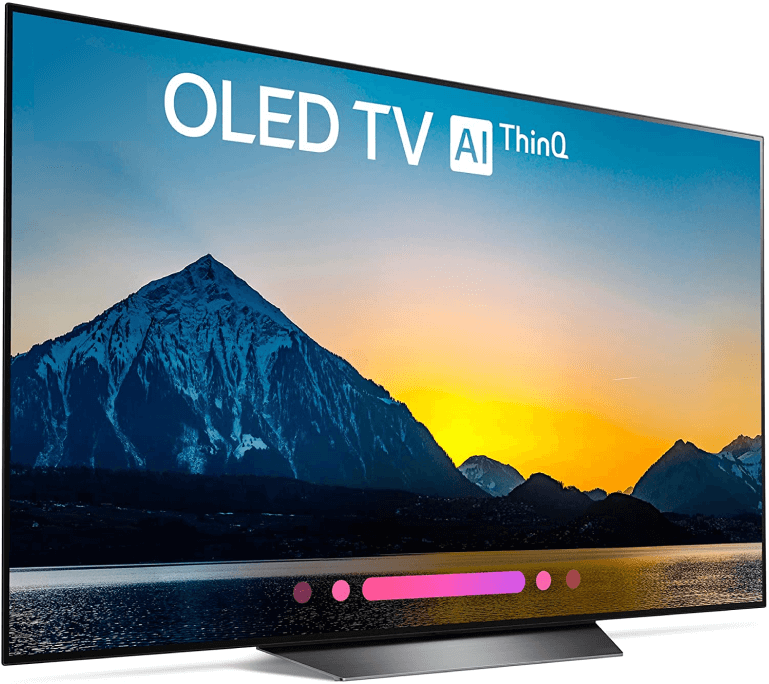
When it comes to OLED and QLED TVs, which are likely to be what you find yourself choosing between,
Things like viewing angles and even the amount of natural light that comes into your home theater space will play a part.
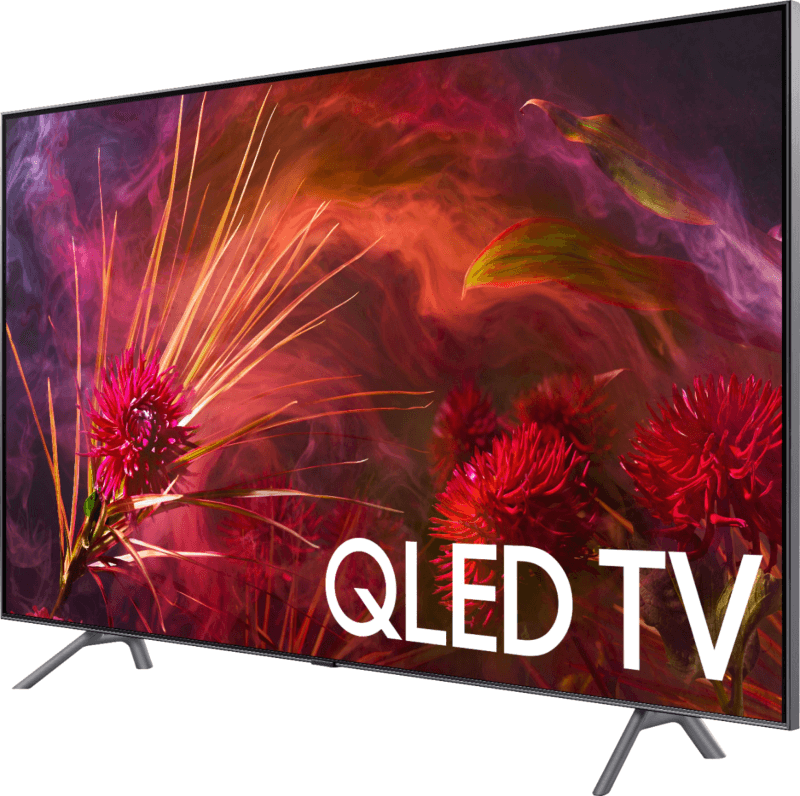
You could buy a TV with the best resolution available, but these factors could both severely limit the enjoyment you get from your new TV!
Here’s a look at the main differences between OLED and QLED screens that will help you make a better buying decision. In addition to the below summary, be sure to check out our full guide to TV screen types.
OLED TVs are typically the most expensive types of TV available. If you’re setting up your home theater, you’ll find a 77-inch OLED TV costs around $4,000.
One of the most vital things to know about OLED TVs is that they don’t emit black light. Instead, when a black image needs to be transmitted on the screen, the LEDs in your OLED TV simply switch off. This means you can typically enjoy greater image depth on an OLED TV screen, as you’re getting genuine “no light” rather than an artificial black.
Many people choose to spend more on an OLED TV because they can give you more flexibility when it comes to viewing angles.
If you have curved seating, for example, or your seats aren’t positioned perfectly front and center of your screen, you’ll still enjoy a high-quality viewing experience with an OLED TV.
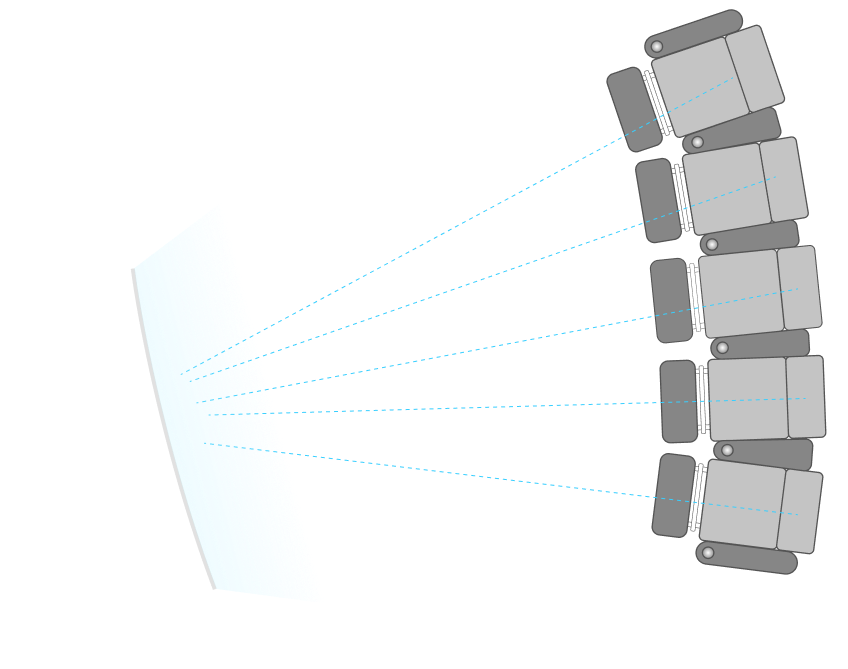
Do you need to worry about LED burn when choosing an OLED TV? Not really to any great extent, as LED burn doesn’t occur until after around 9,000 hours of viewing. Even then, so long as you haven’t watched the same channel for 16 hours a day, or only watch football or basketball where the same colors will be on your screen most of the time, you’re unlikely to have a problem.
QLED TVs are typically around half the price of an OLED equivalent. In most scenarios, the viewing experience you will get is the same. For example, if you had your home theater set up in your attic or basement, where you weren’t getting much natural light, and had your home theater seats in front of your screen, you wouldn’t notice much difference between the two. As such, you can often save yourself some cash and get a QLED TV and your home theater seats for what you’d pay for an OLED TV alone!
That said, it’s worth knowing the differences a QLED TV will bring you as it could sway your buying decision.
just far flatter and with far more technological capability!


This means it has a backlight and omits black light. While this means darker scenes won’t look as sharp on your TV screen, QLED TVs can produce far brighter colors than their OLED counterparts.
However, not all QLED TVs are built the same. There are several types of QLED displays available, with higher-end models not just producing brighter colors but using dimming features to help sharpen up darker scenes too.
Opting for a higher-end model will give you more flexibility around viewing angles.
It’s worth noting that if you opt for a higher-end QLED TV screen, the price will start to approach what you’d pay for an OLED TV. As such, unless you’re buying a QLED TV because your home theater is in a bright room and you want to maximize the brightness of your screen, an OLED TV might be your best choice.
Screen size
Another one of the most significant factors people focus on when buying a new TV is the screen size.
Even with crisper pictures and better resolutions available than ever before, most water cooler chat about your television will revolve around the size of the screen.
However, whether your screen size makes any difference to your viewing experience when choosing a TV based on its resolution depends on where your home theater seating is in relation to your screen.

However, if you have a typical home theater setup, you’ll be sitting at least a couple of meters away from your screen. At such a distance, the chances are you won’t be able to tell the difference between standard HD and 4K unless you have a giant 90-inch screen or something of a similar size.
This is well worth considering if you’re looking to buy a new TV, but don’t necessarily want to spend a fortune. If you have adequate distance between yourself and the TV, you can get the same viewing experience by spending far less on an HD device rather than one that offers 4K.
You should also check out guides on the best screen size to buy depending on the distance you’ll be sitting from your TV. Regardless of the resolution you eventually choose, this will help you get more from your viewing experience.
Quality of TV processor
It’s easy to get caught up thinking about resolution and screen sizes when choosing a new TV.
The power contained within your TV processor could make a significant difference to your viewing experience. Yet, it is often not something people think about when making a buying decision.
Why is processing power so important?
Well, if you’re watching a TV of a particular resolution, say, 4K, but you’re viewing images transmitted in standard definition or HD, your TV will need to upscale the transmitted content for you to view it.
If your TV has a weak or poor-quality processor, the level of upscaling may be limited. Thus, the image you view on your screen may itself be of low quality. In contrast, a more powerful processor will do a better job of upscaling and bring the transmitted images closer to a 4K resolution. Think about times when you have watched something on a cable channel shot in standard definition and looked awful even on an HD or 4K TV. This probably happened because the processor in your TV was low quality and struggled to do anything with the images!
On top of checking out the quality of your TV processor, you should also look at factors including contrast ratio and color accuracy. The higher these are, the better quality your screen will be. A lower-resolution screen with a higher contrast ratio is almost always a better bet than a higher resolution screen that is inferior in these aspects.
What is the future of TV resolutions?
While 8K televisions are widely available today, such is the current level of uptake that they aren’t expected to represent even 1% of the global consumer TV market until at least 2022. As such, the short to mid-term future of TV resolutions is likely to be a lowering of prices of 8K technology through the years, aligned with a more significant volume of content filmed and transmitted in 8K. The TV industry is pushing for 8K to become the mainstream resolution as soon as 2023, but this seems unlikely to happen, especially given how Covid-19 has affected incomes and the global economy in 2020.
of 8K technology
The short to mid-term future of TV resolutions is likely to be a lowering of prices of 8K technology through the years
TV industry is pushing for 8K to become the mainstream resolution as soon as 2023
At present, 16K is very new and is only available for multi-monitor setups. While some of us may have multi-monitor home theater setups, nearly everyone who watches TV at home will do so using a single screen. If TV manufacturers start to bring 16K technology into single screens, this will likely speed up the price reductions of 8K technology.
However, it is reasonable to assume that 4K will be the dominant resolution in homes over the next decade. Indeed, most TV’s larger than 50-inches now come in 4K resolution as standard. Come 2030, 8K will undoubtedly be in more homes. Still, it’s doubtful whether it will be growing at pace or cheap enough for most people to be able to justify buying a new TV set.
Another factor that will likely influence the development of TV technology, in general, will be micro-LEDs.
At present, micro-LEDs are only used in commercial video walls and screens. Micro-LED TVs are available but are expensive for consumers to buy, and you won’t find them in the shops. You even need to contact Samsung directly for a custom quote! However, as they will improve the experience of watching an OLED TV, making them more like a QLED TV in terms of brightness, they may become another factor that ultimately leads to the resolution being less critical.
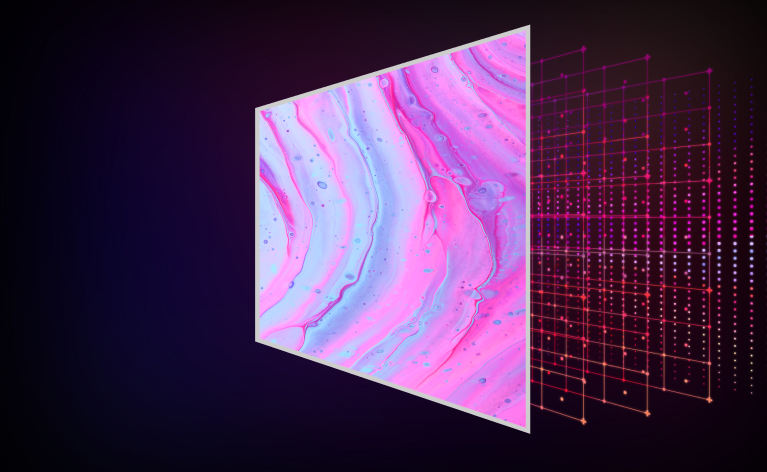
Another factor that will likely influence the development of TV technology, in general, will be micro-LEDs.
At present, micro-LEDs are only used in commercial video walls and screens. Micro-LED TVs are available but are expensive for consumers to buy, and you won’t find them in the shops. You even need to contact Samsung directly for a custom quote! However, as they will improve the experience of watching an OLED TV, making them more like a QLED TV in terms of brightness, they may become another factor that ultimately leads to the resolution being less critical.
On top of all this, we also need to consider the development of internet technology. The successful delivery of the highest quality 4K and 8K transmissions will rely heavily on hyper-speed internet and technologies like 5G, especially in streaming and gaming. While such technologies exist today, they’re available to and used by a small minority of people. As such, the potential for 8K to become mainstream may depend on how people want to take advantage of quicker data connections. From a consumer perspective, a key influence is likely to be how much of a difference they can tell between both 4K to 8K but also in terms of streaming and connection speeds.
Everything you need to know
about TV resolution
We hope you’ve found this guide to TV resolutions useful and now have a better understanding of how your TV’s resolution can make a difference to your viewing experience. At the same time, we hope the additional information we have included has helped you appreciate that you don’t necessarily need to make the resolution your biggest priority when choosing a new TV.
Even if you buy a top of the range 8K TV, your TV won’t exclusively show 8K pictures. The resolution you see will depend on the video source. As such, it’s worth looking closer at the tech built into your TV. An 8K TV with low processing power can be a complete waste of money. Given that you often won’t notice much difference between different HD levels, you might be better off going for a lower resolution TV that you know has the highest possible level of processing power.

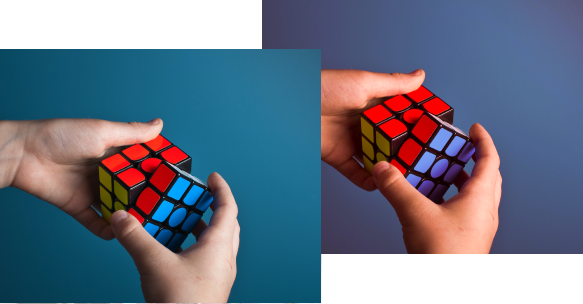
In addition, things like contrast ratio, color accuracy, and whether you have an OLED or QLED screen can make a more significant overall difference to the viewing experience than the resolution.
If you’re buying a new TV these days, you’ll find they all have HD, and many will have 4K, as standard. You can have confidence in the resolution and focus on the other ways to get more out of your home theater viewing experience!
- What is native resolution?
- What is standard definition?
- What is high definition?
- What does 4k mean?
- What devices can I get 8k resolution on?
- What are OLED Tv’s?
- What are QLED Tv’s?
- What is LED burn?
- Why is processing power important for tv’s?
- Is 16k resolution available?
- What factors go into TV resolution?
- How important is tv resolution?
- Red And Black Couch
- Best Reclining Loveseat
- Sofa Sets Prices
- Movie Theater Chairs
- Best Recliner For Watching Movies
- Octane Seating Reviews
- Comfiest Sofa
- Couch Online
- Movie Theater Seats For Home
- Theater Seats Two
- Best Theater Style Recliners Furniture
- Sofa Loveseat Sale
- Classy Recliner Chairs
- Theater Luxury Seating
- Theater Chair 6 Piece Set
- All Deals Recliners
- Theatre Chairs Lowest Prices
- Sectional Set For Sale
- Best Loveseat Theater Seating
- Sofas Sales
- The Best Rated Massage Chair
- Sofa With Center Console
- Octane Home Theater
- Leather Massage Couch
- Theater Seating Manufacturers
- Small Storage Sofa
- Ashley Theatre Chairs
- Leather Power Reclining Sofa With Power Headrest
- Custom Recliners
- Couch With Charging Station
- Genuine White Leather Recliner
- Vega Home Theatre Seating
- Power Recliner 5 Button Switch With Usb
- Palliser Home Theatre Seating
- Home Theater Risers For Sale
- Home Theater Seat Side Tables
- Cinema Seats Table
- Leather Chair Brands
- Custom Sofa
- Where Is Octane Seating Made
- Electric Double Recliner Loveseat With Console
- Best Power Recliners
- Movie Room Basement Ideas
- Modern Lounge Chairs
- Power Recliner Sofas Reviews
- Recliner Leather Sofa
- Home Theater Seating Placement
- Cloth Sofa
- Man Cave Recliner
- Sofa Modern
- Large Man Recliner
- Faux Leather Home Theater Chair
- Standard Recliner Seat
- Row Of Recliner Chairs
- Theaterseatstore Com Reviews
- Black Leather Theater Seats
- Modern Love Seats
- Diamond Tufted Couch
- Recliner Sofa With Massage
- Recliner Sofa With Led Lights
- 2 Toned Furniture
- Black Two Seater Recliner

